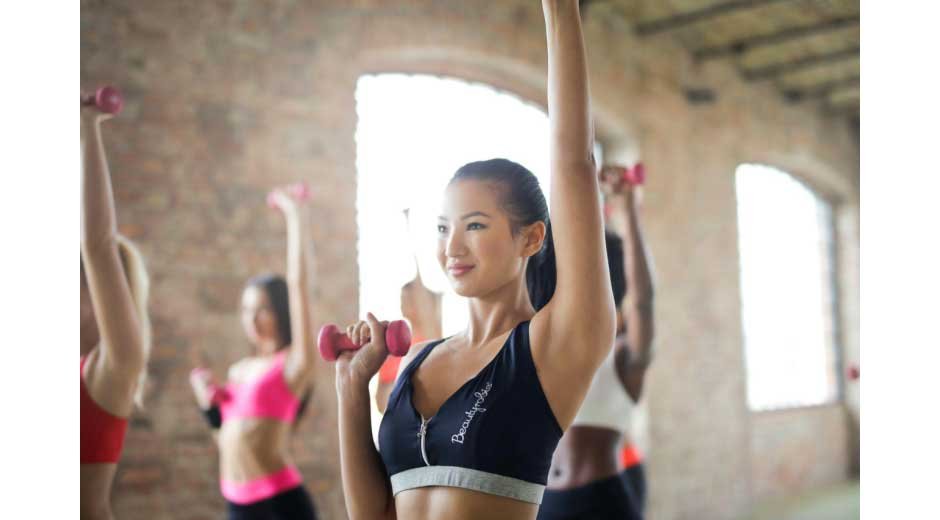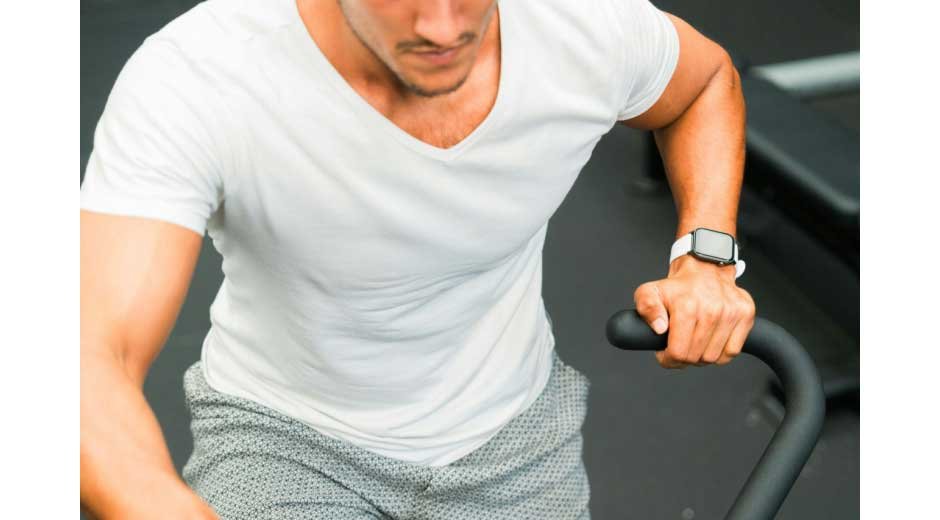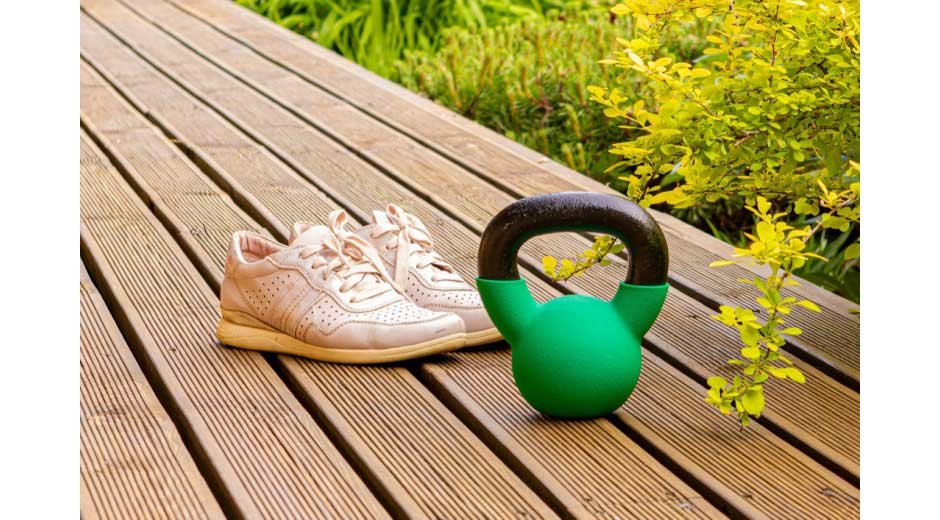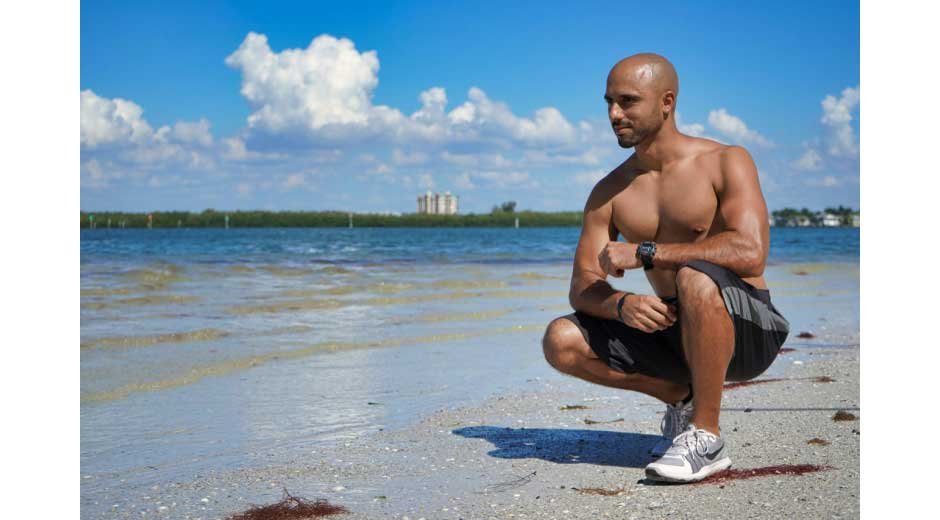There’s something almost miraculous about the human body’s response to movement. When we think of fitness today, we’re no longer just talking about sculpted abs or marathon times—we’re exploring a profound relationship between how we move, how we feel, and how we age. Fitness has evolved into something far more holistic: a cornerstone of healthcare, a ritual of bodycare, and a pathway to genuine wellness that touches every system in our bodies.
The magic lies in understanding that fitness isn’t isolated from the rest of your health—it’s woven into the very fabric of it. A balanced routine that harmonizes exercise, thoughtful nutrition, and mental clarity doesn’t just change how you look; it transforms how your cells regenerate, how your skin glows, and how your body defends itself against disease. It’s fascinating how a simple swim in the morning or a walk after dinner can cascade into benefits you’ll see in the mirror, feel in your joints, and measure in your annual health checkups.
The Science Behind Fitness and Bodycare Synergy
Physical Activity and Cellular Renewal
Your body is constantly rebuilding itself, and exercise acts as a master conductor for this symphony of renewal. When you move, you’re not just burning calories—you’re triggering a cascade of cellular processes that keep you young from the inside out. Regular physical activity accelerates cell regeneration, essentially telling your body to produce fresh, healthy cells at a faster rate. This process directly impacts your skin’s elasticity, that quality that keeps skin firm and resilient.
The secret lies partly in circulation. Every time your heart rate elevates during exercise, blood flow increases dramatically, delivering oxygen and nutrients to every corner of your body, including your skin. This enhanced circulation doesn’t just create that post-workout glow—it supports the ongoing process of collagen production and helps remove cellular waste products that can age your skin prematurely.
Impact on the Immune and Endocrine Systems
Perhaps nothing demonstrates the fitness-health connection more clearly than its effects on your hormonal and immune systems. Regular exercise acts as a powerful regulator of your endocrine system, helping to balance hormones that control everything from mood to metabolism. This hormonal harmony is particularly crucial for women’s health, where fluctuations in estrogen, progesterone, and cortisol can significantly impact both physical appearance and overall wellbeing.
Your immune system responds to consistent exercise like a muscle—it gets stronger with regular training. Moderate physical activity boosts the production of antibodies and white blood cells, while also reducing inflammation throughout the body. This immune enhancement means fewer sick days, faster recovery from illness, and better long-term protection against chronic diseases.
Integrating Fitness into Healthcare
The healthcare landscape has shifted dramatically in recent years, with lifestyle medicine moving from the margins to the mainstream. Prevention has become the watchword, and exercise sits at the heart of this preventive approach. Modern healthcare increasingly emphasizes that the habits we maintain daily matter far more than occasional interventions.
Global health organizations have provided compelling evidence: the World Health Organization reports that physical inactivity is the fourth leading risk factor for global mortality, while regular exercise can reduce the risk of major chronic diseases by up to 50%. This isn’t just about adding years to your life—it’s about adding life to your years.
Fitness as a Foundation of Preventive Healthcare
Reducing Common Health Issues Through Consistent Exercise
Your cardiovascular system thrives on movement. Regular exercise strengthens your heart muscle, improves circulation, and helps maintain healthy blood pressure and cholesterol levels. This translates to a dramatically reduced risk of heart disease, stroke, and type 2 diabetes—conditions that affect millions but are largely preventable through lifestyle choices.
The benefits extend deep into your musculoskeletal system. Weight-bearing exercises strengthen bones, reducing osteoporosis risk, while varied movement patterns keep joints lubricated and mobile. Your posture improves as core muscles strengthen, reducing back pain and the physical signs of aging that come from poor alignment.
Mental health improvements might be exercise’s most immediately noticeable benefit. Physical activity triggers the release of endorphins, your brain’s natural mood elevators, while also reducing stress hormone levels. Better sleep quality, reduced anxiety, and improved cognitive function all stem from regular movement—benefits that compound over time.
Tailoring Fitness for Women’s Health
Women’s bodies navigate unique physiological journeys, and fitness routines should honor these transitions. Hormonal stages—from menstruation to pregnancy, postpartum recovery to menopause—each present specific needs and opportunities. Understanding these nuances can transform fitness from a generic prescription to a personalized healthcare strategy.
Practices like yoga, Pilates, and light resistance training offer particular benefits for hormonal balance and bone density. These lower-impact approaches strengthen muscles while supporting joint health, crucial for maintaining mobility and preventing injury as estrogen levels fluctuate. For women seeking guidance through these transitions, working with a female personal trainer in Singapore or similar professional support can provide tailored strategies that respect individual health needs and goals.
During pregnancy, appropriate exercise supports both mother and baby, improving circulation, reducing swelling, and preparing the body for childbirth. Postpartum fitness helps restore core strength and addresses the specific challenges of recovery. Through menopause, targeted exercise helps manage weight changes, protects bone density, and alleviates common symptoms like hot flashes and mood changes.
The Role of Nutrition and Hydration in Bodycare

Nutritional Fitness — Feeding the Skin and Muscles
The relationship between what you eat and how you look runs deeper than most realize. Your diet directly influences your metabolism, which in turn affects everything from skin clarity to muscle recovery. Think of nutrition as internal bodycare—every meal is an opportunity to nourish your cells with the building blocks they need to thrive.
Certain nutrients act as allies in your fitness journey. Vitamin C and amino acids support collagen production, keeping skin firm and wounds healing quickly. Omega-3 fatty acids reduce inflammation and support joint health. Protein provides the amino acids necessary for muscle repair and growth. Meanwhile, antioxidants from colorful fruits and vegetables protect cells from the oxidative stress that exercise naturally produces.
Hydration and Detoxification
Water is perhaps the most underestimated element of both fitness and bodycare. Proper hydration keeps skin plump and radiant, supports every cellular process, and enables efficient digestion. During exercise, hydration becomes even more critical—it regulates body temperature, transports nutrients, and removes metabolic waste products.
The detoxification process relies heavily on adequate water intake. Your kidneys, liver, and lymphatic system all depend on sufficient hydration to flush toxins from your body. After workouts, this becomes particularly important as your body works to clear lactic acid and other byproducts of exercise from your muscles.
Smart Eating Habits for Active Lifestyles
Timing and composition of meals can significantly enhance fitness results. Pre-workout nutrition should provide readily available energy—think complex carbohydrates paired with a small amount of protein. Post-workout meals should focus on protein for muscle repair and carbohydrates to replenish glycogen stores.
Balanced macronutrients throughout the day maintain energy levels and support recovery. Mindful eating—paying attention to hunger cues, eating slowly, and choosing whole foods—naturally aligns nutrition with your body’s actual needs rather than emotional triggers or external pressures.
Swimming: A Complete Fitness Habit for All Ages
Why Swimming Stands Out Among Exercises
Swimming possesses a unique quality among exercises—it’s simultaneously gentle and challenging, accessible and comprehensive. The water’s buoyancy removes impact stress from joints while still providing resistance for muscle strengthening. Every stroke engages multiple muscle groups, creating a full-body workout that improves flexibility, builds endurance, and enhances cardiovascular health all at once.
The rhythmic nature of swimming also promotes mental clarity. The combination of controlled breathing, repetitive movement, and sensory immersion creates a meditative state that reduces stress while building physical strength. For anyone dealing with joint pain, arthritis, or injury recovery, swimming offers a path to fitness that doesn’t compromise healing.
Swimming for Kids — Building Healthy Habits Early
Introducing children to swimming plants seeds of lifelong wellness. The physical benefits are immediate and substantial—improved motor skills, enhanced lung capacity, and full-body strength development. But swimming offers so much more than physical prowess. <a href=”https://www.theswimstarter.com/sg/”>Learn more about Cellulite vs Stretchmarks</a> and how early aquatic activity can even influence skin health and circulation patterns that benefit children throughout their lives.
The confidence that comes from mastering swimming skills extends far beyond the pool. Children learn water safety, develop social skills through group lessons, and build self-esteem through progressive achievement. Early swimmers often show better coordination, spatial awareness, and even academic performance—evidence of swimming’s comprehensive developmental benefits. Resources like The Swim Starter can help parents introduce their children to swimming safely and effectively, establishing a foundation for lifelong aquatic fitness.
Aquatic Exercise and Women’s Health
For women navigating pregnancy, dealing with joint concerns, or managing chronic pain, aquatic exercise provides relief and strengthening in equal measure. The water’s support reduces strain on weight-bearing joints while allowing for full range of motion exercises that would be uncomfortable on land.
Swimming and water aerobics improve posture by strengthening core and back muscles without compressing the spine. For pregnant women, aquatic exercise reduces swelling in extremities while providing safe cardiovascular conditioning. The improved circulation benefits extend beyond the workout, supporting overall health and reducing common pregnancy discomforts.
Building a Sustainable Fitness Routine for Holistic Bodycare

The Importance of Consistency Over Intensity
The fitness world often celebrates extremes—marathon training, intense bootcamps, dramatic transformations. Yet research consistently shows that small, regular habits produce more sustainable results than sporadic intense efforts. A daily 20-minute walk, regular stretching sessions, gentle swimming, or consistent yoga practice builds cumulative benefits that intensive but irregular workouts cannot match.
This approach prevents burnout and reduces injury risk. Your body adapts best to progressive, consistent challenges rather than sudden dramatic increases in activity. Starting where you are and building gradually creates a foundation for lifelong fitness rather than a cycle of enthusiasm and abandonment.
Balancing Fitness, Rest, and Recovery
One of fitness’s greatest paradoxes is that growth happens during rest, not during exercise. Overtraining can sabotage bodycare goals—it elevates stress hormones, suppresses immune function, and can even accelerate aging. Quality sleep, strategic rest days, and active recovery sessions aren’t luxuries; they’re essential components of any effective fitness program.
Recovery practices like gentle stretching, foam rolling, massage, and mindfulness exercises support the body’s repair processes. These practices reduce muscle soreness, improve flexibility, and provide mental restoration that keeps motivation high. The balance between effort and recovery determines whether fitness enhances or compromises your overall health.
Creating a Personalized Plan
Generic fitness advice rarely accounts for individual circumstances, goals, or limitations. Aligning your exercise routine with specific healthcare objectives—whether managing a chronic condition, preparing for surgery, or simply optimizing wellness—requires thoughtful customization.
Modern technology offers powerful tools for this personalization. Wearable fitness trackers monitor heart rate, sleep quality, and activity levels, providing data that helps refine your approach. Healthcare apps can track progress, suggest modifications, and even connect you with professionals who can guide your journey. The key is using these tools to support—not replace—your body’s own wisdom about what it needs.
Mind-Body Connection: The Overlooked Pillar of Bodycare

Psychological Benefits of Active Living
Exercise functions as a form of therapy, offering psychological benefits that rival many conventional treatments for mild to moderate depression and anxiety. Movement triggers the release of endorphins and serotonin—neurotransmitters that elevate mood and create feelings of wellbeing. This biochemical shift can transform your emotional landscape as profoundly as it changes your physical form.
Stress management proves crucial for bodycare because chronic stress accelerates aging at the cellular level. Elevated cortisol levels contribute to inflammation, collagen breakdown, and even premature graying. Regular physical activity provides a healthy outlet for stress, literally moving tension out of the body while building resilience against future stressors.
Incorporating Mindful Practices
Meditation, controlled breathing exercises, and yoga bridge the gap between physical fitness and mental wellness. These practices calm the nervous system, shifting it from fight-or-flight mode into rest-and-digest states where healing and repair can occur. The internal calm generated by mindful movement supports emotional wellbeing and produces measurable healthcare outcomes, from lower blood pressure to improved immune function.
Mindfulness during exercise—truly feeling your body move, noticing your breath, staying present with physical sensations—amplifies fitness benefits while reducing injury risk. This awareness helps you distinguish between productive discomfort and harmful pain, respecting your body’s limits while gently expanding them.
The Role of Modern Lifestyle Trends in Shaping Health and Bodycare
Digital Fitness and Accessible Wellness
Technology has democratized fitness, making expert guidance available regardless of location or budget. Fitness apps, online trainers, and virtual healthcare consultations have removed traditional barriers to wellness support. This accessibility means personalized fitness advice is no longer a luxury reserved for those with gym memberships or personal trainer budgets.
Virtual platforms also offer flexibility that traditional fitness models cannot match. Busy parents, shift workers, and those with mobility limitations can access quality instruction on their own schedules. This convenience factor significantly improves adherence—the true measure of any fitness program’s success.
Sustainable Fitness — Eco-Friendly Swimwear and Activewear
Environmental consciousness has extended into fitness and bodycare products, with growing awareness of how our choices impact both personal and planetary health. Eco-friendly swimwear made from recycled materials, sustainable activewear using organic fabrics, and biodegradable bodycare products reflect an understanding that true wellness extends beyond individual health to encompass environmental stewardship.
These sustainable options often offer superior quality and performance while reducing exposure to harmful chemicals. Choosing products that align with environmental values adds another dimension to bodycare—one that considers long-term wellbeing for both yourself and future generations.
Community and Accountability
Humans are social creatures, and fitness journeys often succeed or fail based on social support. Group workouts, family fitness activities, and corporate wellness programs tap into our innate need for connection and accountability. Exercising with others increases motivation, makes workouts more enjoyable, and creates a support system that sustains commitment through inevitable challenges.
Community fitness also introduces healthy competition and inspiration. Witnessing others’ progress, sharing struggles and victories, and working toward common goals transforms fitness from a solitary obligation into a shared celebration of what bodies can achieve.
Conclusion: Reframing Fitness as a Daily Form of Self-Care
The journey through fitness, bodycare, and health reveals a simple truth: consistent movement is one of the most powerful forms of self-care available to us. These habits elevate both healthcare outcomes and bodycare results not through dramatic interventions, but through daily choices that honor our bodies’ needs. Fitness isn’t separate from wellness—it’s the foundation upon which genuine health is built.
Understanding fitness as preventive wellness rather than punishment or obligation transforms the entire experience. Each workout becomes an investment in future vitality, each nutritious meal an act of self-respect, each rest day an acknowledgment of your body’s wisdom. Start small, stay consistent, and view movement as nourishment for both mind and body.
Perhaps the most profound realization is this: in caring for our physical selves through mindful fitness and bodycare, we’re not pursuing vanity—we’re practicing a form of self-respect that radiates outward, influencing every aspect of our lives. The body you move today is the home you’ll live in tomorrow. Treat it with the wonder and care it deserves.









